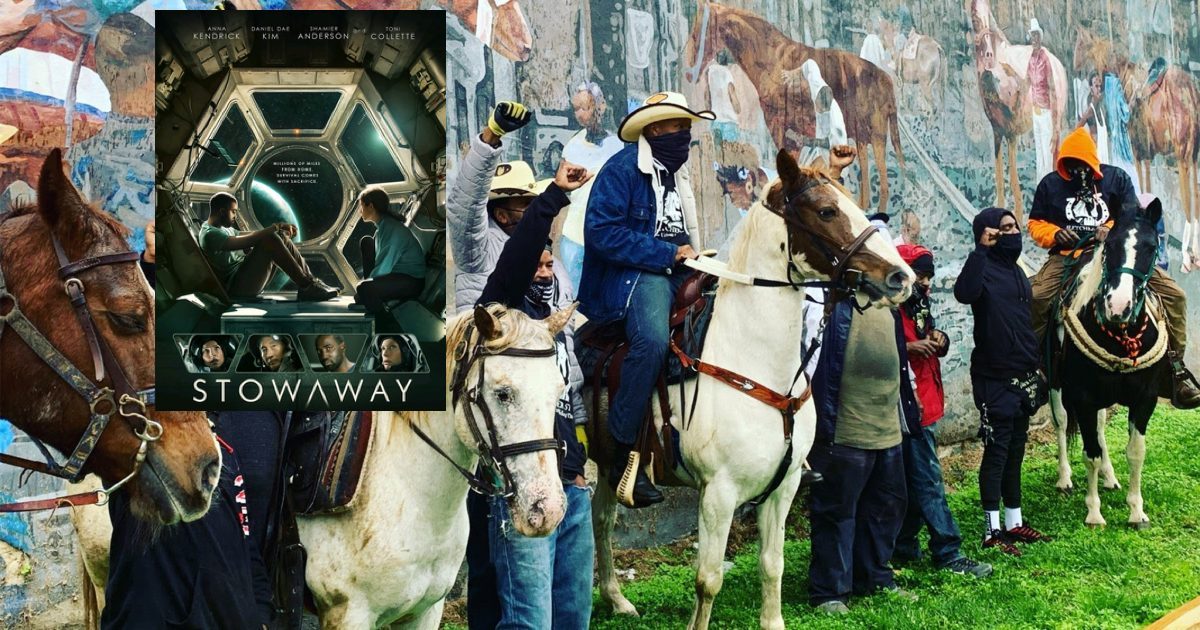APRIL 25, 2021 – Last night we watched Stowaway on Netflix. The estimated cost: $6 billion. No, not our Texas-style “bundled” cable/internet subscription for April because of cold weather without regulation of utilities. And no, not the actual production budget for the film. Six billion is the estimated cost (according to the internet) of sending four people to Mars and bringing them back, and a mission to Mars is the aim of the three—then four—actors in Stowaway.
Actually, the film budget was probably closer to $6,000. The four actors are the entire cast—not including a mission control voice for about 15 words in the launch phase of the star-crossed journey. (In subsequent communications, only the mission commander’s words are revealed.) Special effects are minimal (by clever application of centripetal force, even weightlessness is eliminated), and the set—even the title—seems to have been borrowed from the Netflix series, Away, another movie about going to Mars—with a larger “pay” load.
Stowaway is really about moral choices, and as we all know, philosophical talk is cheap. It’s the application that becomes expensive. In the movie, two scientists and a flight commander blast off from earth, and after a few gratuitously tense moments, the astronauts are catapulted toward their destination. Out of nowhere—actually, an overhead compartment containing life support systems—drops a pre-flight engineer who’d suffered a concussion while working on the spacecraft hours before launch and lapsed into unconsciousness. With a limited oxygen supply, the crew of three, now four, haven’t enough for the survival of the fourth person.
Every remedial possibility is considered but none is workable. One person must die or all will perish. At that juncture, the film gets interesting—and gives the viewer plenty to chew on long after the credits have rolled.
For me, the film presented a tangential question: Were we humans really intended to go where we shouldn’t? But I suppose the same question was raised back when the earth was flat.
In what became a double-feature evening, we returned to earth to watch Concrete Cowboy. If the cosmos beyond our planet is filled with infinite wonders, so is home itself. This down-to-the-ground second film presented a fictionalized—but finely so—version of the Fletcher Street Riding Club, which, to our astonishment, is a reality in north Philadelphia. The all-Black cast (except for a white cameo or two)—several “actors” being actual characters—and their horses depict an improbable community of expert riders and the tightly-knit culture they’ve created and sustained in the midst of an urban no-man’s land.
My strong recommendation: watch it!
There’s no end to the things to discover, observe, and ponder here at home on the blue planet—including our outreach to the worlds beyond it. We are a curious species endowed with imaginations every bit as spectacular as the laws of physics and the unpredictable mutations of social, cultural, psychological, and biological evolution.
I say, “Go for it!” before earth winds up looking like Mars.
(Remember to subscribe to this blog and receive notifications of new posts by email.)
© 2021 by Eric Nilsson
